
20210720
<La Vie Tang>The World’s Most Magnificent and Complete Ancient Roman Shrine

Before coming to Lebanon, I had always thought that the most well-preserved ruins of the ancient Roman shrine could only be found in Rome. The truth is not. I bet that most people including me couldn’t imagine that the world’s most magnificent and complete ruins of the ancient Roman shrine is actually right in the Middle East, in the territory of Lebanon at the eastern coast of the Mediterranean. This surprise to me is equally incredible as when I met the ancient Jerash, the Rome away from Rome on my first visit to Jordan.
Baalbek, lying in the Bekka Vally more than 80 kilometers away from the northeast of Beirut, is 1,170 meters above sea level and today has developed into an agriculture-dominating city populated by around 100,000 people including the metropolitan area. Bekka Valley adjacent to Syria is occasionally afflicted by armed clashes and attacks, and an influx of Syrian refugees even deteriorates its turbulent situation. But Baalbek on the other side is a world-known historical site with the most remarkable attractions in Lebanon, so many travelers choose a day-round trip to Baalbek without a stay overnight.
The word ‘Baalbek’ means the ‘City of the Sun’. It was the Canaanites building a temple for the sacrifice of the Lord Baal more than 3000 BC before, and since then it had become a shrine receiving worships from hundreds of thousands of believers and had been inhabited by Canaanites and Phoenicians until in 64 BC that Rome captured and ruled the city for more than 200 years. During its governance, the shrine continuously expanded on its original base and more than 100,000 slaves were said to contribute to the project construction. Three existing shrines are dedicated to three gods respectively from the Roman mythology, Jupiter, the master of all gods, Bacchus, the god of wine and Venus, the god of love. Baalbek Temples with a sublime fuse of two civilizations, both Phoenician and Roman, has been selected into the World Cultural Heritage in 1984.
Vicissitudes of more than 2,000 years crossing periods of Greece, Rome, Byzantine, Arab and Ottoman have brought about destructions to the shrines by either human or nature, but historical remains from the long-dilapidated temples still win the world’s admiration. I considered myself an experienced traveler with the vision widely broadened by so many spectacles of temple sites from various places, but in front of the huge-scaled Baalbek Temples of magnificence, no appropriate word in my vocabulary could match my intensive feelings.
I first came to an old quarry where the recorded world’s largest artificially-mined boulder lies in front of the site, 20 meters in length, 4.5 meters in width and height, up to thousands of tones estimated in weight, and it has not yet completely separated from the ground. I couldn’t imagine how to carry the giant boulder to the temple without modern lifting equipment. A special name is given to the boulder called ‘Stone of the Pregnant Woman’, and among a number of explanations to the name, one is that women are prone to getting pregnant after touching the boulder.
Stone steps cross the gate led me to the Hexagonal Court first, which was supposed to be circled by 30 columns of 8 meters in height individually, and the granite used in the columns came from Egypt. Further into the hall is the Great Courtyard spacious in the size of 135 meters long and 113 meters wide, surrounded at three sides by colonnades of rose-red granite columns. In the center, two altars differing in size used to sacrifice cattle and sheep in the old times and each side is prepared with a pool to cleanse the sacrificial offerings.
The open side of the courtyard is paved with dozens of stone steps leading to the platform 7 meters in height, which stands the majestic temple of Jupiter. Reported to be the world’s largest Roman temple in scale, it is about 88 meters long and 48 meters wide. 54 giant columns were supposed to safeguard the main hall in the center, each with a height of about 20 meters, a diameter of 2.3 meters and an entablature of 5 meters in height. In this way, the shrine should be 25 meters to the top. Each giant column is spliced on so tightly by three cylindrical columns with no support of adhesive bonding that even a blade fails to cut into its seam. The superb architectural craftmanship in the ancient times is incredibly remarkable.
The Temple of Jupiter never managed to escape from its disastrous fate. In the 6th century, lightning destroyed the structure. Affected by earthquakes and other factors coupled with the rotations of times, the temple was reconstructed or converted for other purposes by different religious regimes. In the Justinian period, for example, collapsed columns were transported to Constantinople, Turkey, for the construction of St. Sophia Cathedral; and during the Crusades period, stones were used to build fortresses.
Most of the temple has dilapidated so far but exquisite traces of carvings still visible on some remains prove its past glory. Patters of eggs and arrows are still clearly printed on the capitals of Corinthian Order. It is said that eggs symbolize new birth while arrows represent death. In addition, the fine-sculptured lion’s head on the entablature is actually an outlet.
The only remains that are comparatively complete in the temple at present are a row of six giant columns on the south connected by entablatures. Regretfully, the temple was under maintenance that day with six giant columns screened by shed frames and curtains, so I had no chance to have a look. You know, the six long-standing columns are Lebanon’s symbol and pride.
Three blocks of giant boulders still stand on the platform of the temple, same as the one in the old quarry. I was wondering how the ancient managed to move these huge objects from a distance of 5 kilometers and how they built up all the structures. All these mysteries repeatedly won my admiration in the ancient wisdom.
On the left side of the Temple of Jupiter is the Temple of Bacchus smaller than the former in scale, with a length of 69 meters and a width of 36 meters, but it is the comparatively well-preserved one and the heart of the entire complex. In terms of scale and preservation, it exceeds the Parthenon in Athens, Greece. The periphery of the temple has 42 columns of Collins Order, among mostly-preserved columns of which there are 19 remaining intact.
In ancient Greek and Roman myths, Bacchus is the patron saint of plants, agriculture and winemaking. When a flight of steps led me to the temple gate of 11 meters in height, I observed patterns of grapes and wine pots engraved on the columns, the implied meaning of which is manifest to me. The Temple of Bacchus astonished me not only for its immense scale but the minor details. Beams topped the temple gate are exquisitely engraved with patterns of eagle which represent Jupiter, the wand clutched in its talon representing the god of message Mercury and there also carves the relief of Cupid on behalf of Venus.
Except for the gate, the other three sides of the interior are surrounded by walls and stone pillars sculpted with various patterns of flowers, fruits and grains as vivid as life. It is said that there were many statues in the niches on the stone walls but have been mostly damaged. A broken relief fallen on the ground depicts the bust of a goddess that seems to be floating on the water and entangled by a giant snake, the image of Cleopatra as my tour guide said. However, I didn’t find any evidence supporting the statement from materials, most of which said it the shape of fairy maiden.
In front of the Temple of Bacchus is the small, round-shaped Temple of Venus which is so dilapidated that only a few stone pillars and parts of walls remain survived on the pedestal. Bad preservation also results in the surrounding environment looking like a heap of rubble. If it had not been for the tour guide’s instruction, I would never realize that it was a temple popular with young men and women. Rumor has it that young men and women in the ancient times would happily enjoy themselves in the temple after drinking their fill in the Temple of Bacchus.
Dilapidated stone pillars, walls and reduced rubbles scattered in the ruins of temple complex may only demonstrate that it had been inundated by the flood of history, but its former glory and magnificence are undeniable. The grace of Baalbek temple complex still brings about infinite reveries and remembrance. The world is like a fleeting show and time waits for no one. I was wondering what kind of legacy would we pass to future generations thousands of years later so demonstrate the era that we are living now? Whether it will inspire our descendants in the same way, and to the same extent as today what these columns steeping in history bring to us?
It is worth mentioning that Bekka Valley is superexcellent fertile to grow grapes and make wine, and perhaps the Temple of Bacchus was built as a result. On my return trip, I walked down the grape plantation into Lebanon's largest wine producer and the world-renowned Chateau KSARA, tasting wines from Bekka Valley and indulging myself as an innocent winebibber detached from worldly considerations.
Tang Yu Lap Hantec Honorary Chairman

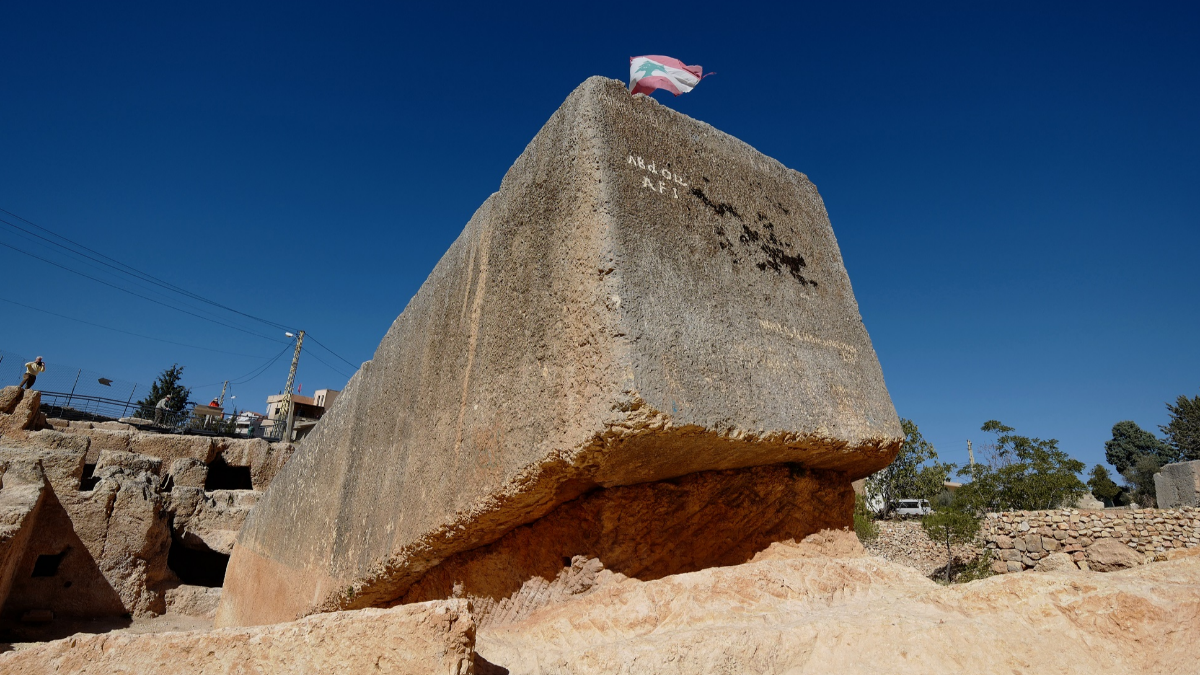


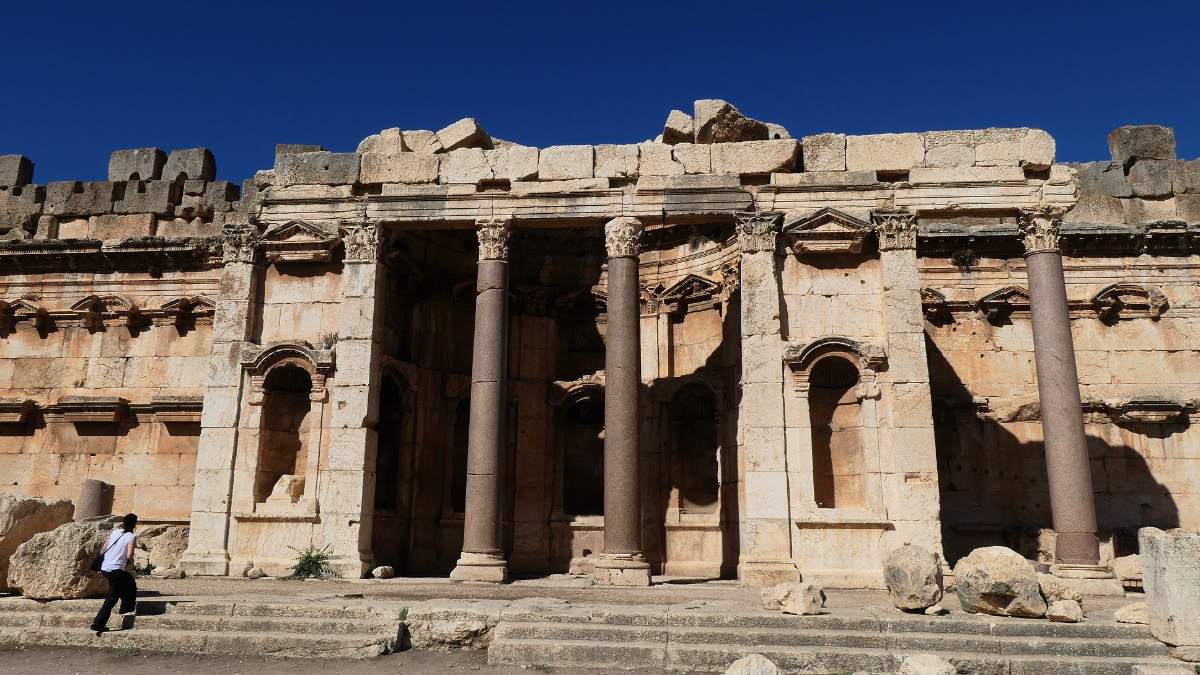
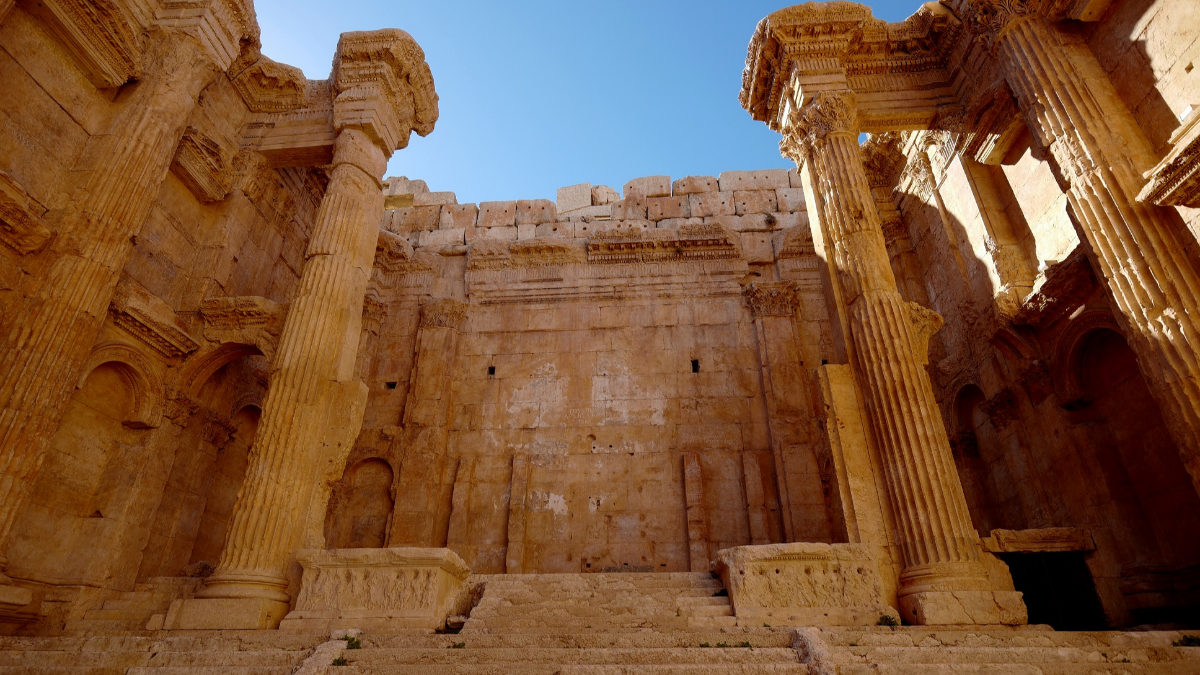
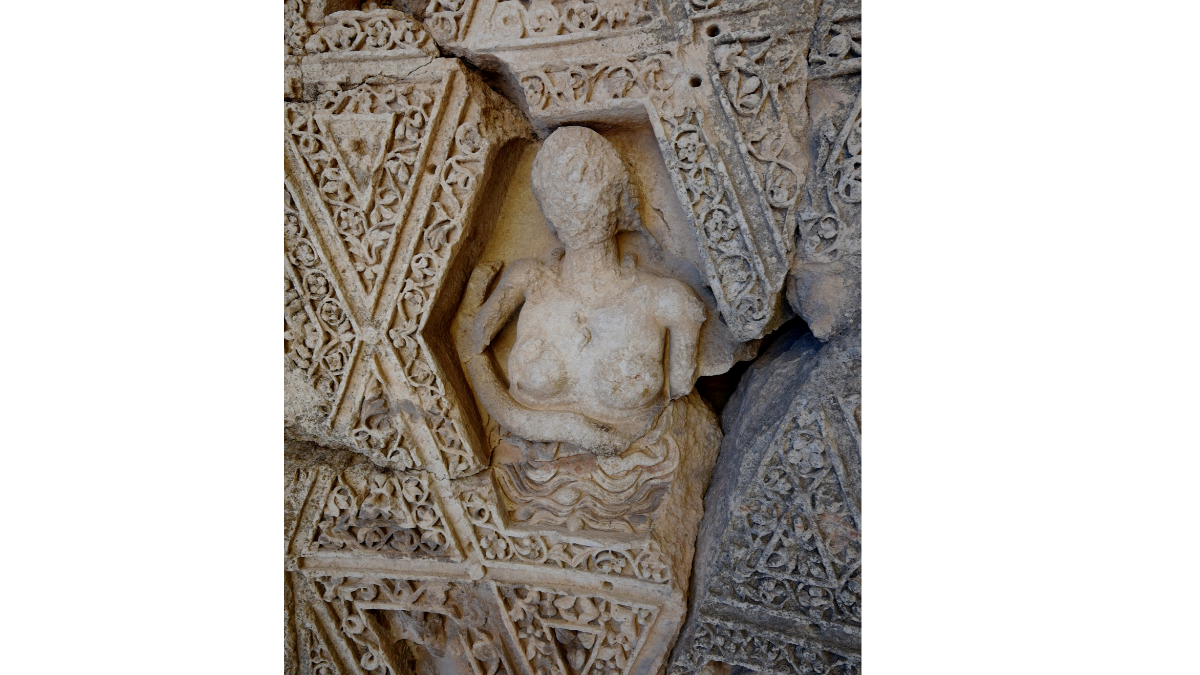
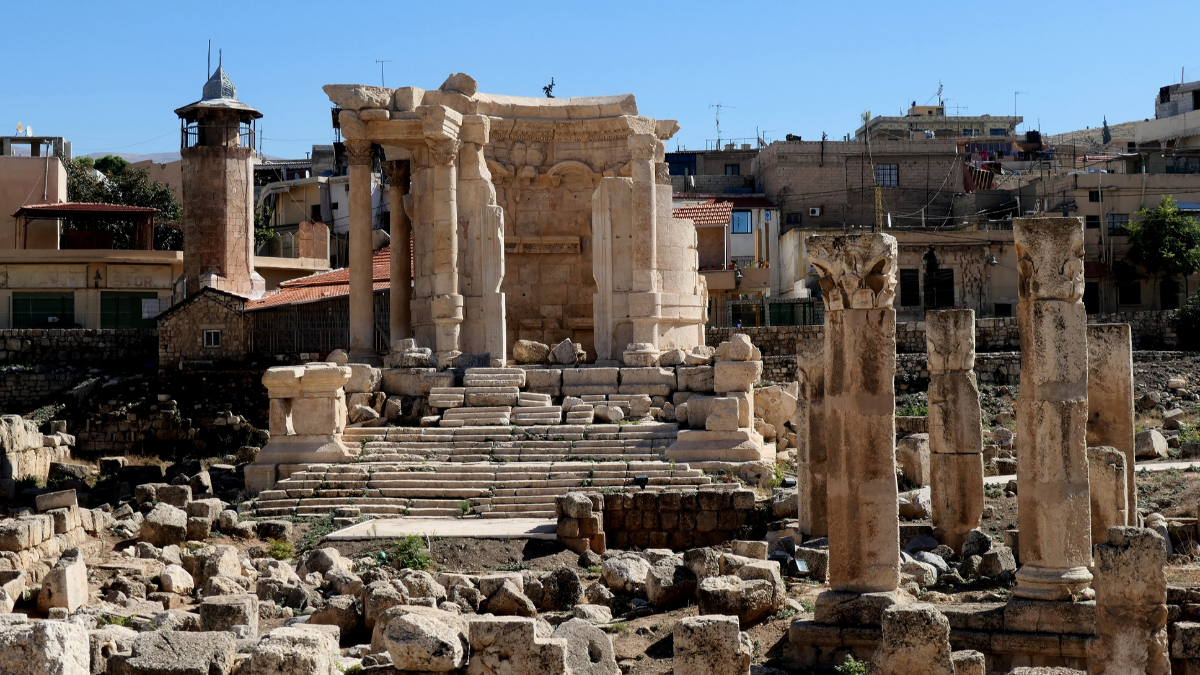

The world’s largest artificially-mined boulder lying on the old quarry
Previous Article
Next Article
Extended Reading
<Markets Analysis>U.S. Treasury Yields Remain High, Caution Needed at USD105
BY Group Branding and Promotion FROM Hantec Group
《謎一樣的國家:老玩童探索以色列》New Book Sharing Conference
BY Group Branding and Promotion FROM Hantec Group
福豬報喜 萬事亨通
BY Andrew lou FROM Hantec Group
5th Floor, 34-36 Gray’s Inn Road, London WC1X 8HR
(44) 20 4586 8213
06A, Building 5, Lecheng International, No.76, South 2 Road, Baiziwan, Chaoyang District, Beijing
(86) 10 8515 1011